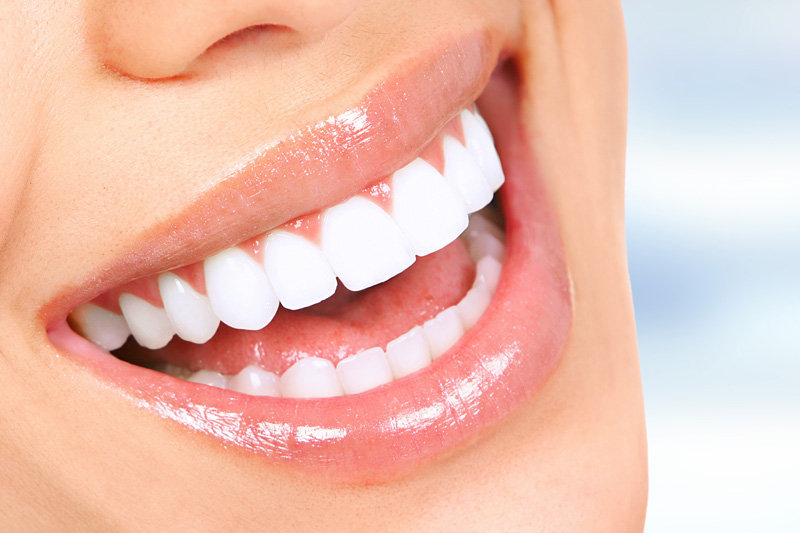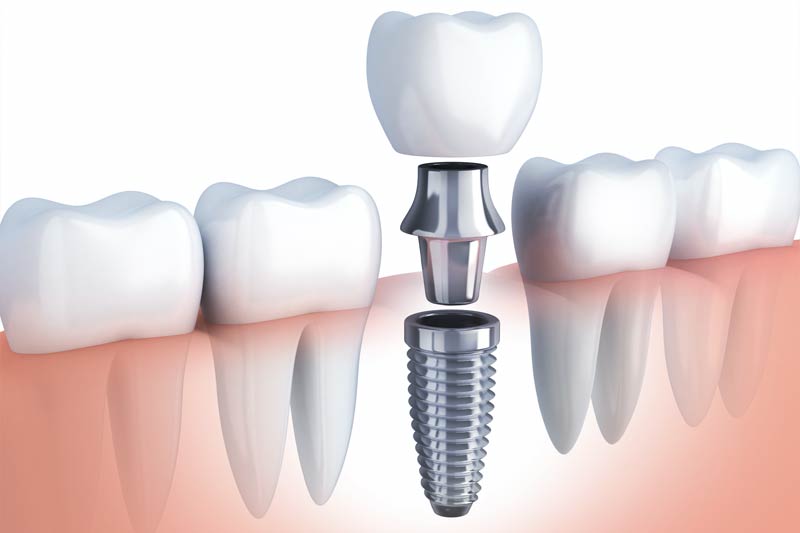Dental Veneers Dentist in Riverside

Dentist Near Me Riverside offers Porcelain Veneers - Veneers refer to thin shells of tooth-colored material that are permanently bonded to the front surface of damaged teeth to enhance their appearance. They’re typically made from resin-composite or porcelain materials, and can be recommended to treat a range of cosmetic dental concerns including:
- Chipped or broken teeth
- Discoloration or staining that can’t be fixed with whitening
- Smaller-than-average teeth
- Gaps in the teeth
- Crooked teeth
- Unusually shaped or pointed teeth
- And more
Porcelain Veneers Can Change Your Life
Depending on your case, may recommend just one veneer to fix the damage, or multiple veneers to create a symmetrical smile. Veneers are usually applied to the top front six to eight teeth for aesthetics purposes.
We will examine your teeth and thickness of tooth enamel in order to decide if you are a candidate for Porcelain Veneers. We will consult with you by using diagnostic tools and help create the smile of your dreams
Why Choose Geomel Brian Bebing, DMD
- Focused on Patient Satisfaction
- We Use The Highest Quality Materials
- Latest Digital Technology
- Advanced Training in Cosmetic Dentistry
- And more
Call Us Today
If you want to improve your smile or if you have any questions regarding our cosmetic dentistry services, then please call our office at 951-777-2825. We’re happy to answer any questions, inquiries, or concerns you may have.
Dental veneers refer to thin shells of tooth-colored material that are permanently bonded to the front surface of damaged teeth to enhance their appearance. They’re typically made from resin-composite or porcelain materials, and can be recommended to treat a range of cosmetic dental concerns including:
- Chipped or broken teeth
- Discoloration or staining that can’t be fixed with whitening
- Smaller-than-average teeth
- Gaps in the teeth
- Crooked teeth
- Unusually shaped or pointed teeth
Types of dental veneers
Depending on your case, the dentist may recommend just one veneer to fix the damage, or multiple veneers to create a symmetrical smile. Veneers are usually applied to the top front six to eight teeth for aesthetics purposes.
There are different types of veneers available, including:
- Traditional porcelain veneers - These veneers measure about 0.5 mm in thickness, and require the removal of a similar amount of material from your tooth enamel to allow for smooth placement.
- No-prep veneers - Lumineers, Vivaneers, and composite resin veneers are thinner at 0.3 mm. They don’t require any tooth preparation before placement. These no-prep veneers are less invasive to apply and take less time, which makes them a popular choice for correcting minor aesthetic defects.
Noprep veneers are easier to place, but they’re not as effective for correcting discolored teeth because you’re limited to the amount of layers you can add to hide the stains. Moreover, adding multiple layers increases the risk of creating a thicker tooth that may create hard to clean spots along the gumline, putting you at risk of gum disease. Traditional veneers are easier to smooth for a better fit and optimal oral hygiene.
Your dentist will examine your teeth and thickness of tooth enamel in order to decide the best material for your veneers. Lumineers may be appropriate if you have thin tooth enamel to prevent the risk of tooth sensitivity. The choice of material will also depend on your budget, since Lumineers are more expensive than porcelain and composite veneers.
Please visit your cosmetic dentist to discuss ways to improve your smile with dental veneers.
Which is the best material for dental veneers?
Veneers are a cosmetic dental procedure, which means that they are mostly used to improve the appearance of your teeth, giving you a brighter smile. Veneers are usually applied to the top front six to eight teeth for aesthetics purposes.
Typically, the application of dental veneers requires intensive tooth preparation by removing some of the tooth enamel to create room to attach the veneer. But the amount of material removed depends on the type of veneers used as follows:
- Porcelain veneers measure about 0.5 mm in thickness. Porcelain veneers require the tooth to be prepared before placement. This involves grinding down the tooth structure to remove a thin layer of tooth enamel, after which impressions are taken for the fabrication of your custom veneers in a dental lab. Temporary veneers are fitted until the permanent ones are ready.
- Lumineers and Vivaneers don’t require any tooth preparation. They measure about 0.3 mm in thickness. As non-prep veneers, they’re directly bonded to the front surface of the concerned teeth..
- Composite resin veneers are also thinner at 0.3 mm in thickness. They also don’t require any tooth preparation before placement, and are referred to as no-prep veneers.
Noprep veneers are easier to place. They are less invasive to apply and less time consuming, which makes them a popular choice for correcting minor aesthetic defects. However, adding multiple layers increases the risk of creating a thicker tooth that may create hard to clean spots along the gumline. Traditional veneers are easier to smooth for a better fit and optimal oral hygiene.
Lumineers may be appropriate if you have thin tooth enamel, though the choice of material will also depend on your budget, since Lumineers are more expensive than porcelain and composite veneers. Your dentist will examine your teeth and thickness of tooth enamel in order to help you decide the best material for your veneers.
What are no-prep dental veneers?
If you’re looking to improve your smile, your cosmetic dentist may recommend that you place thin coverings over the visible surface (front part) of the tooth to conceal any damage. These coverings are known as dental veneers, and are fabricated from tooth-colored materials for aesthetic reasons.
Dental veneers can be used to correct different cosmetic dental problems, including:
- Worn or chipped teeth
- Discolored teeth that won’t respond to bleaching
- Misshapen or crooked teeth
- Uneven gaps or spaces between your front teeth
Veneers are typically made from porcelain material, which requires intensive tooth preparation by removing some of the tooth enamel to create room to attach the veneer. This method is used because porcelain veneers measure about 0.5 mm in thickness. Grinding down the tooth helps to maintain its natural size.
No-prep veneers
Lumineers, Vivaneers, and composite resin veneers that are thinner at 0.3 mm don’t require any tooth preparation before placement. These no-prep veneers are less invasive to apply and take less time, which makes them a popular choice for correcting minor aesthetic defects.
No-preparation veneers offer several advantages over traditional porcelain veneers, including:
- Easier to place since no tooth preparation is needed
- Don’t require fabrication in a dental lab, which makes them cheaper
- Can be used if you have thin tooth enamel to prevent the risk of tooth sensitivity
- Maintain the natural tooth structure for greater strength of restored teeth
- Placed in a single appointment
However, you’re limited to the amount of layers you can add to reduce the risk of creating a thicker tooth that may create hard to clean spots along the gumline, putting you at risk of gum disease. Traditional veneers are easier to smooth for a better fit and optimal oral hygiene. Your dentist will examine your teeth and thickness of tooth enamel in order to decide the best material for your veneers. Lumineers may be appropriate.
Please visit your cosmetic dentist to discuss ways to improve your smile with dental veneers.
Who is the ideal candidate for dental veneers?
Veneers are a common cosmetic dental treatment for creating a bright, beautiful, and balanced smile. Typically, the application of dental veneers requires tooth preparation by removing some of the tooth enamel to create room to attach the veneer. This method is used with porcelain veneers that measure about 0.5 mm in thickness. But for Lumineers, Vivaneers, and composite resin veneers that are thinner at 0.3 mm, they don’t require any tooth preparation before placement. These no-prep veneers are less invasive to apply and take less time, which makes them a popular choice for correcting minor aesthetic defects.
Your qualified dentist can recommend several varieties of porcelain and alternative dental materials to customize your smile makeover. This can help you regain confidence in your smile and improve the quality of your life.
However, veneers are not ideal for every person or every case. To qualify for veneers:
- You must be suffering from one of the treatable cosmetic dental problems, such as chipped or broken teeth; discoloration or staining that can’t be fixed with whitening; smaller-than-average teeth; gaps in the teeth; crooked teeth; or unusually shaped or pointed teeth
- The dentist must determine that your teeth and gums are healthy enough to safely apply veneers. If not, perhaps due to decay or gum disease, these conditions must be first treated before veneer placement.
- You must have sufficient tooth enamel so a little can be grinded away to create room for the veneers. Keep in mind that this is a permanent process. In case the veneers come loose in future, they will be replaced.
- You must not have a problem with clenching or grinding your teeth. Although the veneers are tough, they can chip or break if subjected to continuous forces of clenching and grinding. If you still want veneers, it’s advisable to wear night guards while sleeping.
Final note
As with any other dental procedure, you should discuss your expectations for veneers and alternative treatment options with your dentist. Proper oral hygiene, including regular dental visits are necessary to ensure optimal oral health.


